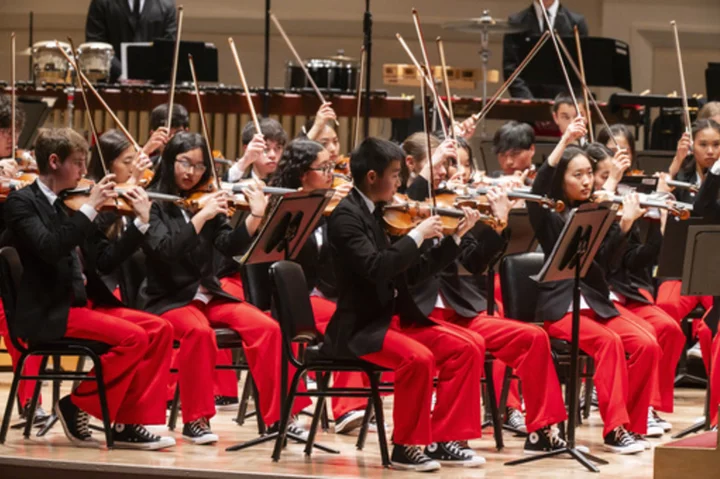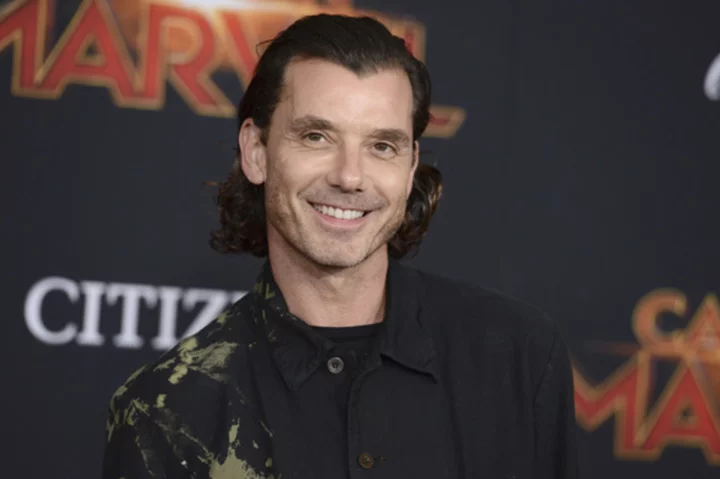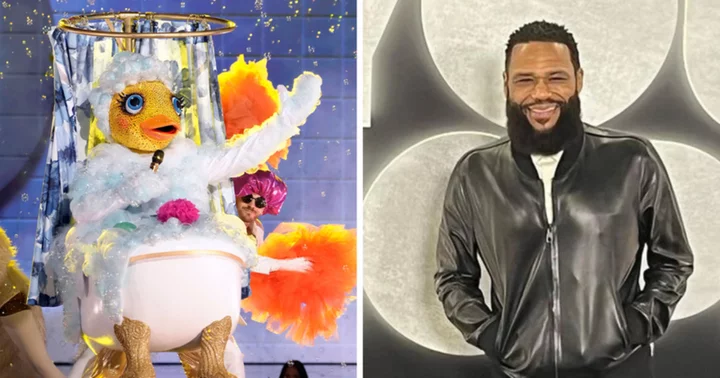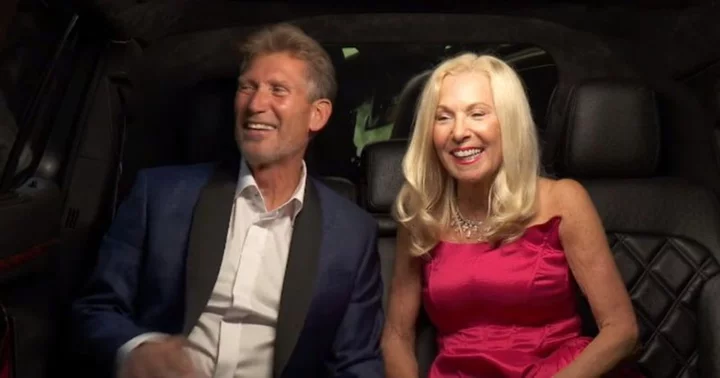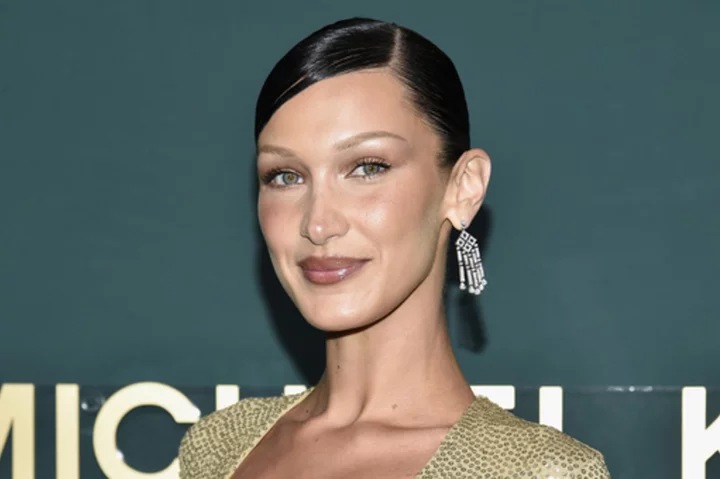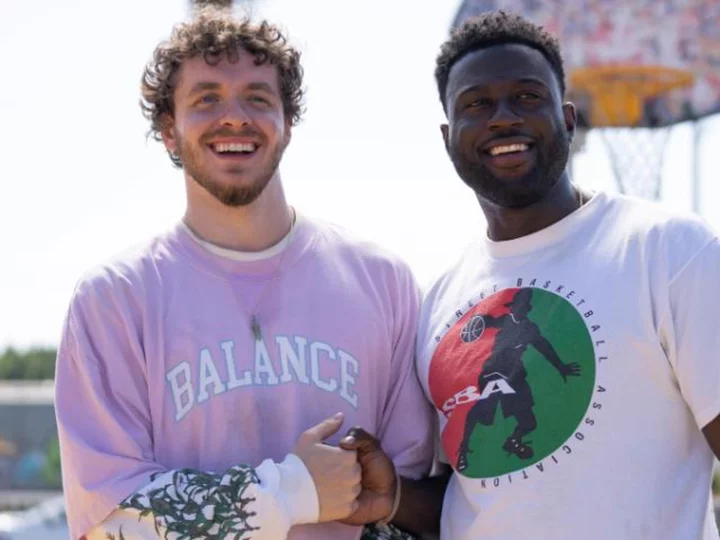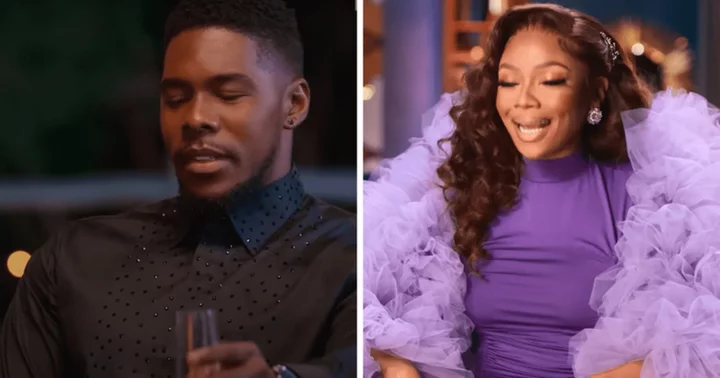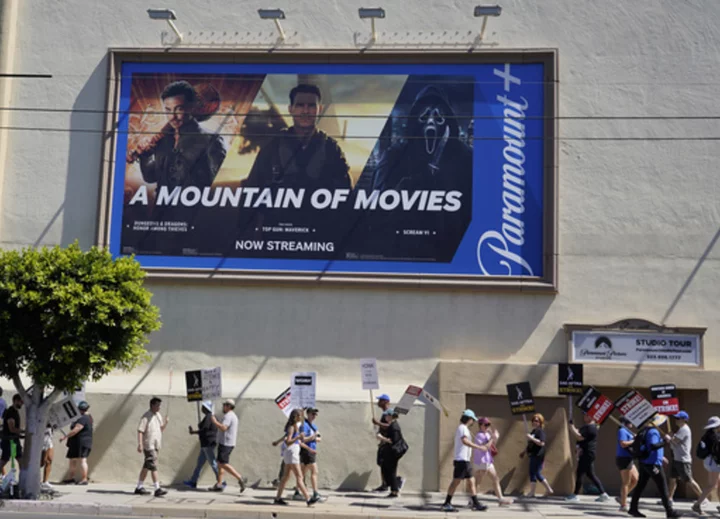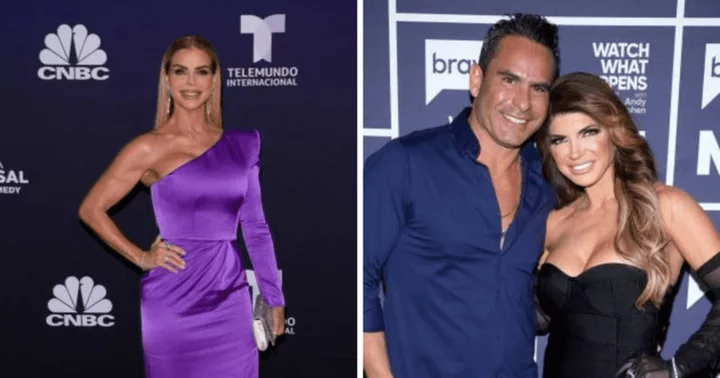NEW YORK (AP) — Teen musicians from the National Youth Orchestra of the USA walked onto the Carnegie Hall stage and acted in unison, much like string sections following their leaders: They pulled out cell phones and took selfies.
Carnegie Hall’s initiative to train the next generation turned 10 this year. After arriving July 1 for intensive instruction that began the following day at suburban Purchase College, performers gathered at America’s premier concert hall to play for conductor Andrew Davis in a 2,800-seat auditorium filled with many family members and friends.
“I learned how the orchestra itself is a living creature,” said Yuri Lee, a 19-year-old violinist from Tuckahoe, New York, who served as an apprentice composer last year.
This year’s orchestra gives eight concerts on a tour through July 28, with performances in Groton, Massachusetts; Joliette, Quebec; Nashville, Tennessee; Dallas; Jackson Hole, Wyoming; Stanford, California; and San Diego.
There are 108 members this year ages 16-19 from 31 states and Puerto Rico, including 13 from previous seasons and 35 who were in NYO2, the sister orchestra for ages 14-17 founded in 2016. A third group, NYO Jazz for ages 16-19, began in 2018.
Davis, the 79-year-old former head of the Toronto Symphony Orchestra, Glyndebourne Festival and Lyric Opera of Chicago, is the latest distinguished conductor to lead the group, joining Valery Gergiev, David Robertson, Marin Alsop, Michael Tilson Thomas and Antonio Pappano among others.
Musicians wore black blazers and bright red pants for a Carnegie program on Friday night, broadcast live and streamed by WQXR radio. The concert included the world premiere of Valerie Coleman’s “Giants of Light,” Barber’s Violin Concerto with Gil Shaham, and Berlioz’s “Symphonie fantastique.”
Davis views his task to take “all that energy and that enthusiasm, that passion, and galvanize it into totally unified conception and realization.”
“I berate them more than I would, but I hope always with a twinkle in my eye,” Davis said. “I’ve been talking in these rehearsals more than I ever would with professionals, and sometimes it’s to try to get them to get the sense of the particular mood of the moment in a piece.”
Carnegie contacts schools, music education programs and arts commissions in all 50 states to raise awareness of the program. Applicants face long odds — for tuba, there might be 18 people vying for one spot.
Applications open after Labor Day and run into November. Musicians and Carnegie’s artistic staff review the contenders and invitations are issued in February.
Lee became aware “how much communication goes on during rehearsal, even without words."
"There’s a lot of eye contact. It’s almost as if we’re reading each other’s minds,” she said.
A total of 1,274 musicians have participated in the programs, touring to 17 nations on four continents. Alumni have gained positions with the New York Philharmonic, Cleveland Orchestra, Philadelphia Orchestra, Boston Symphony Orchestra and Metropolitan Opera Orchestra and the academies of the Berlin Philharmonic and Paris Opéra. Past members will gather next March 14 at Carnegie for a concert under Met music director Yannick Nézet-Séguin.
“It feels like the opportunity that was created by Carnegie Hall for these young people really did attract some of the best players in the country,” said Douglas Beck, Carnegie’s director of artist training programs. “I do think certainly we see in our programs greater diversity than in the professional sphere, so as time goes by we hope that pattern will continue. We consider it an important part of our mission.”
Clive Gillinson, Carnegie’s executive and artistic director since 2005, patterned the initiative after the National Youth Orchestra of Great Britain, founded in 1948. A cellist, he joined that group long before his administrative career.
“I played in a terrible youth orchestra in school and the complete exhilaration and an extraordinary feeling of suddenly playing in an orchestra with the most brilliant young players in the country was utterly dazzling,” he recalled. “It was something that changed my life. From that moment, it was just so clear I could not live my life without music.”
Members of the U.S. orchestra are selected from Zoom auditions and the program is funded by Carnegie Hall and its donors. Students at high-level music schools such as Juilliard are not eligible.
Dylan Khangsar, an 18-year-old percussionist from Lewisville, Texas, learned of the orchestra from a YouTube video of a Shostakovich symphony. He was in awe of Davis, who instructed him to imagine sounds of a guillotine while playing Berlioz’s fourth movement “Marche au supplice (March to the scaffold).”
“I learned that the music journey really never ends,” Khangsar said. “He’s lived a long life and he’s still learning and he’s giving us so much wisdom. It’s taught me how vast the music world is, composing and conducting, all these aspects that I couldn’t even imagine.”
After rehearsal, it took Shaham nearly a half-hour to make his way off stage. One of the world’s most accomplished violinists, he was surrounded for photos and advice.
“It was really just kind of mind-blowing," he said. "I just think it’s very heartening, 100 young people are so committed to our art and are so good at it and love it so much, it makes you proud to be American.”

